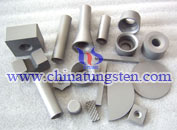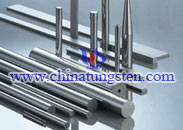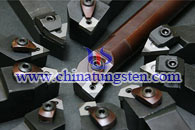Cemented Carbide
Cemented carbide is one of the strongest metals known to human beings. It is denser than lead and harder than steel. Cemented Carbide's unique combination of strength, hardness and toughness satisfies the most demanding applications.
| Cemented Carbide Products | ||
 |
 |
 |
| With properties of high hardness and good wear resistance, cemented carbide is most appropriate raw material of various cemented carbide rods, bars, nozzles, cutters,etc. | ||
An important feature of the cemented carbide is the potential to vary its composition so that the resulting physical and chemical properties ensure maximum resistance to wear, deformation, fracture, corrosion, and oxidation. Besides, a wide variety of shapes and sizes that can be produced using modern powder metallurgical processing offers tremendous scope to design cost-effective solutions to many of the problems of component wear and failure encountered in both the engineering and domestic environment.
In general, the super hard materials all suffer from lower toughness and poor resistance to sudden fracture, the cemented carbide have a unique combination of high hardness and good toughness within a wide range and thus constitute the most versatile hard materials group for engineering and tooling applications.
Chinatungsten Online develops cemented carbide technology to meet our present and future customer needs. Chinatungsten Online is dedicated to advancing Cemented Carbide technology in order to meet our customers' present and future needs. Every step in the manufacture of a Cemented Carbide component – from powder production to finishing – is crucial to ensure optimum performance. At Chinatungsten Online, we have full control of each processing step and in developing proprietary production processes that further improve our technological capabilities. We are trying our best to develop new products and new grades of Cemented Carbide that enhance our customers' operations through superior performance and reduced costs.
Production process:
1) Raw material
Sheelite or wolframite is the tungsten containing mineral. Ammonium-Para Tungsten is the beginning raw material of our production. The "Wet "process is the first step involving a sequence of dissolutions, precipitations and separations.
2) Reduction
After a hot reduction of the APT in hydrogen we obtain pure tungsten powder (W). By varying the reduction process the grain size of the tungsten power can be controlled within ca.1-20um
3) Carburization
Tungsten and carbon is mixed in the proper proportions. The mixture is heated at a high temperature in hydrogen under formation of tungsten carbide powder (WC)
4) Weighing-in of the ingredients
Different WC powder and binder Cobalt (Co) powder are looked as the raw material for the manufacturing of cemented carbide. After weighing-in of WC, Co and other additives to prescribed composition and cemented carbide grade, the mixture is wet milled.
5) Milling
The milling has effect on both carbide grain and homogeneity of the slurry. The milling procedure is important for achieving homogeneous cemented carbide after sintering.
6) Spray-drying
After milling the slurry must be dried, for example, by spray-drying to powder form. This "Ready-To-Press"(RTP) powder consists of spheric agglomerates of the constituents.
7) Blending test
The pressing properties and the composition of the RTP-powder are important for the following process. The size and shape of the RTP-powder are measured. Furthermore the powder must have good flow behaviors in order to uniformly fill the cavities of a press tool.
8) Compaction
The production of cemented carbide starts to press RTP-powder into compacts. Different methods of compaction RTP-powder:
-Uniaxial die pressing: gives high reproducibility in shape, relatively high fixed and low variable costs.
-Cold isostatic pressing(CIP): For products with shapes unsuited for uniaxial pressing, low fixed and high variable costs.
-Extrusion: For cemented carbide rods: high fixed and low variable costs.
9) Soft Machining
In some cases the compacts are soft machined or green shaped into a proper shape prior to sintering.
10) Sintering
The sintering is the final process step in which the cemented carbide get its properties as a high strength engineering material. The sintering process is performed at such high temperature so the molten binder could combine with the WC. The sintering could be done with or without high isostatic gas pressure (HIP)
11) Machining
After the sintering the compact has undergone shrinkage of ca.50 volume-%. Some CC-blanks are ready for dispatch after sintering. Most blanks are machined by different means, for example, EDM, turning, drilling, grinding, to make finished tool.
12) Quality Control
A quality control is performed of the cemented carbide pieces before shipment: dimension, shape and physical properties are checked before approval of the cemented carbide parts.






 sales@chinatungsten.com
sales@chinatungsten.com